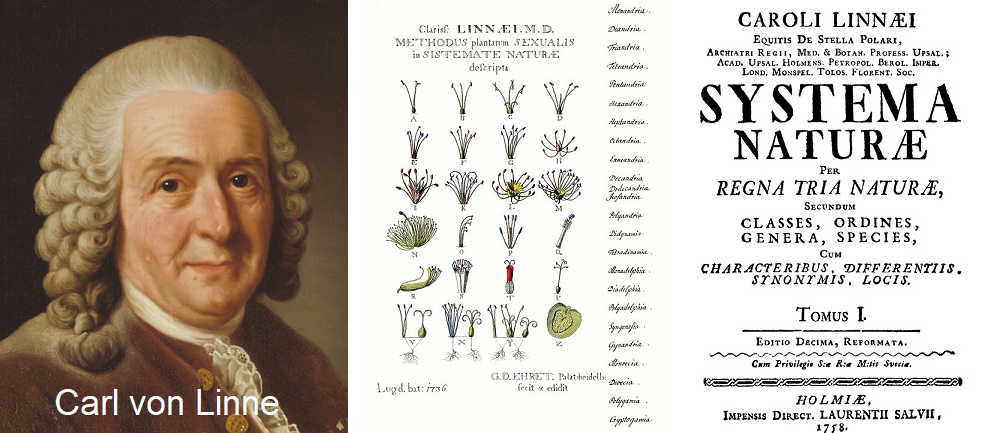Term (from Greek taxis = order, nomos = law) for categorisation in a hierarchical system. In biology (the science of living things), living things such as animals, plants and viruses are categorised and classified hierarchically into groups (taxa) according to their natural relationship. This categorisation into a hierarchical system is traditionally associated with the classification into a certain rank, such as species (spezies), genus (genus) or family (familia). The first attempts were made in ancient times, for example by the Greek naturalist Theophrastus (370-287 BC).

Carl von Linné
The Swedish botanist Carl von Linné (1707-1778) developed the foundations of modern taxonomy and introduced the concept of species into biological systematics. In his two-volume work "Species Plantarum", published in 1753, he described all the plants known to him on 1,200 pages with around 7,300 species. Among other things, the plant genus Vitis(grapevine) was described here for the first time. Together with the work "Systema Naturæ" published in 1758, this established the scientific nomenclature still used today in botany and zoology.
Voices of our members

For my many years of work as an editor with a wine and culinary focus, I always like to inform myself about special questions at Wine lexicon. Spontaneous reading and following links often leads to exciting discoveries in the wide world of wine.
Dr. Christa Hanten
Fachjournalistin, Lektorin und Verkosterin, Wien